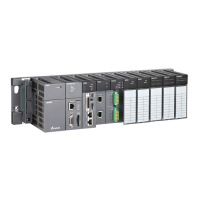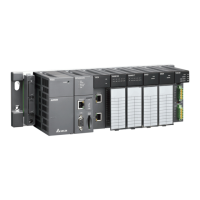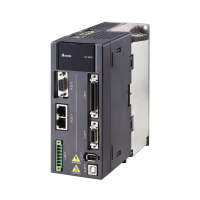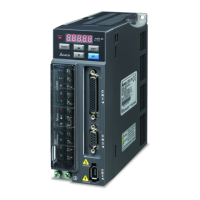Chapter 11 DeviceNet Remote I/O Module AHRTU-DNET
11-13
Choice of terminal resistor
DeviceNet is required to install one terminal resistor of 121 ohm to either end of the trunk cable
respectively.
In the following figure, the thick line represents the main cable and the thin line represents the
sub-cable. And the yellow objects at the ends of the main cable stand for the terminal resistors.
The red object is the power distribution box and the blue one is the topology distribution box.
Purpose of terminal resistor
The terminal resistor is used for eliminating the signal reflection in the communication cable.
All signal transmission cables have the characteristic impedance. The characteristic impedance
of Delta DeviceNet communication cable is about 121 ohm.
When being transmitted to the end of the communication cable, because the impedance of the
end is different from the characteristic impedance, the signal will be reflected, which will
interfere with the new signal and the signal wave form distortion will happen.
The phenomenon of the signal wave form distortion is not obvious in the short-distance
transmission. But the wave form distortion will become severe with the increasing
communication cable. Therefore, the two ends of the trunk cable must be installed with the
terminal resistors respectively.
Installation of terminal resistor
The DeviceNet cable consists of five wires: red wire, blue wire, white wire, black wire and
shielded wire.
The terminal resistors must be installed to the two ends of the trunk cable only. Since the blue
wire and white wire are for signal transmission, the terminal resistor must be installed between
blue wire and white wire.

